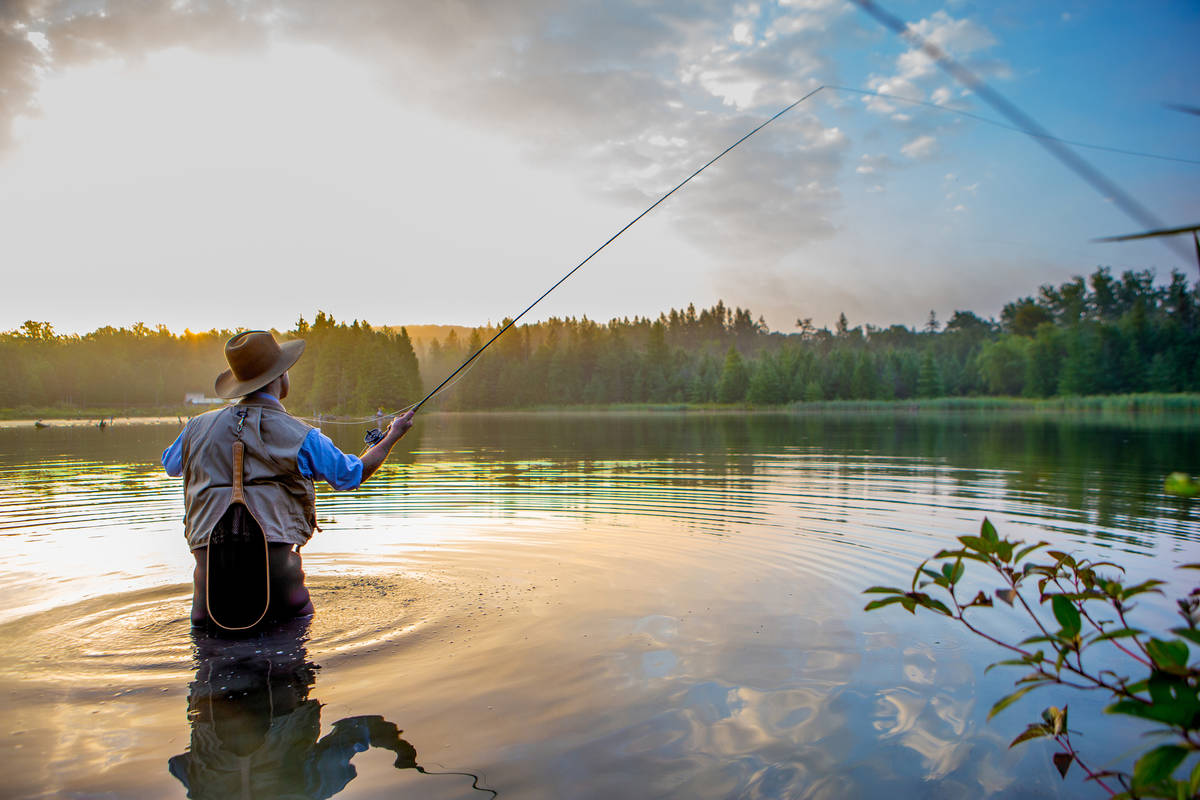Tying fly patterns an indoor activity worth considering

On July 20, 1969, as Neil Armstrong was becoming the first man to put bootprints on the moon, I was getting my first introduction to the sport of fly-fishing on an icy mountain stream in Idaho. It wasn’t a hands-on experience by any stretch of the imagination, but I was close enough to get a good look at the process.
While us kids were drifting night crawlers through likely looking holes, Darwin Dinsdale, a family friend, was teaching Dad how to cast an artificial fly. I remember wondering how that small bunch of feathers and thread was supposed to catch fish, but it didn’t take long to see that it did.
Darwin caught and released several trout before any us had the privilege of doing the same. While that trip is memorable for many reasons, what stands out is the memory of Dad catching his first fish on a hand-tied fly.
There also was that porcupine that gave us all a good start when it suddenly stepped out of the brush and crossed the trail in front of us as we hiked back in the dark. And there was the time Dad jumped out from behind a big pine tree after slipping past us because we weren’t moving fast enough. His bear imitation encouraged us to pick up speed.
Years passed and a college friend gave me a second introduction to fly-fishing. Though his approach was anything but traditional, it was quite effective.
We happened upon a nondescript pond whose surface was dimpled with ripples where fish were feeding on the surface. “Let me show you how we do this,” my friend said with a smile.
He pulled out his spinning rod and tied on a clear bubble. To that he added about six feet of leader followed by a small mosquito pattern. He cast the fly as you would any normal bait and let it set on the surface until the ripples stopped. Then he turned his reel just enough for the fly to move. That was all it took to fool a scrappy rainbow. It hammered the fly.
Eventually, I developed a more serious interest in fly-fishing It wasn’t long before I began tying my own flies, a hobby that can be both relaxing and frustrating at the same time. Relaxing because it gives one the opportunity to focus on outdoor things even when you can’t be there. Frustrating because it doesn’t take long to learn that there are fly tiers and those who tie flies.
It’s kind of like the difference between a photographer and one who snaps photos. One produces art. My nephew is a fly tier and I tie flies. His are small pieces of art fit for display. Mine will fool a fish, but they won’t catch your eye. Nevertheless, I still enjoy tying them.
If the COVID-19 outbreak has you staying home for Nevada, perhaps now is the time to take up a new hobby. Tying your own flies is a lot like cooking. All you need to get started are the right ingredients, the tools to put them all together and a few recipes to guide you through the process.
As with any hobby, there are more tools available than you need, but don’t get caught up in the marketing, not at first anyway. You can always add to your collection later.
The basic tools can be purchased in kits from your major outdoor retailers. Many of those are still selling their wares online with home shipping. In some locations, you can even get curbside pickup. In addition to tools, fly-tying kits include the materials needed to tie the most basic fly patterns. Like any hobby kit, the more you spend, the more material you get. But the quality of those ingredients is generally medium. That will get you started, however.
There are many books and online resources available that provide a list of basic fly-tying tools you will need, along with step-by-step recipes for the most popular entry-level flies. The internet also boasts a collection of videos that walk viewers through the process.
Two books that I still use are “The Orvis Fly-Tying Guide” by Tom Rosenbauer and “Fly Tying Made Clear and Simple” by Skip Morris.
Freelance writer Doug Nielsen is a conservation educator for the Nevada Department of Wildlife. His “In the Outdoors” column, published Thursday, is not affiliated with or endorsed by the NDOW. Any opinions he states in his column are his own. Find him on Facebook at @dougwritesoutdoors. He can be reached at intheoutdoorslv@gmail.com